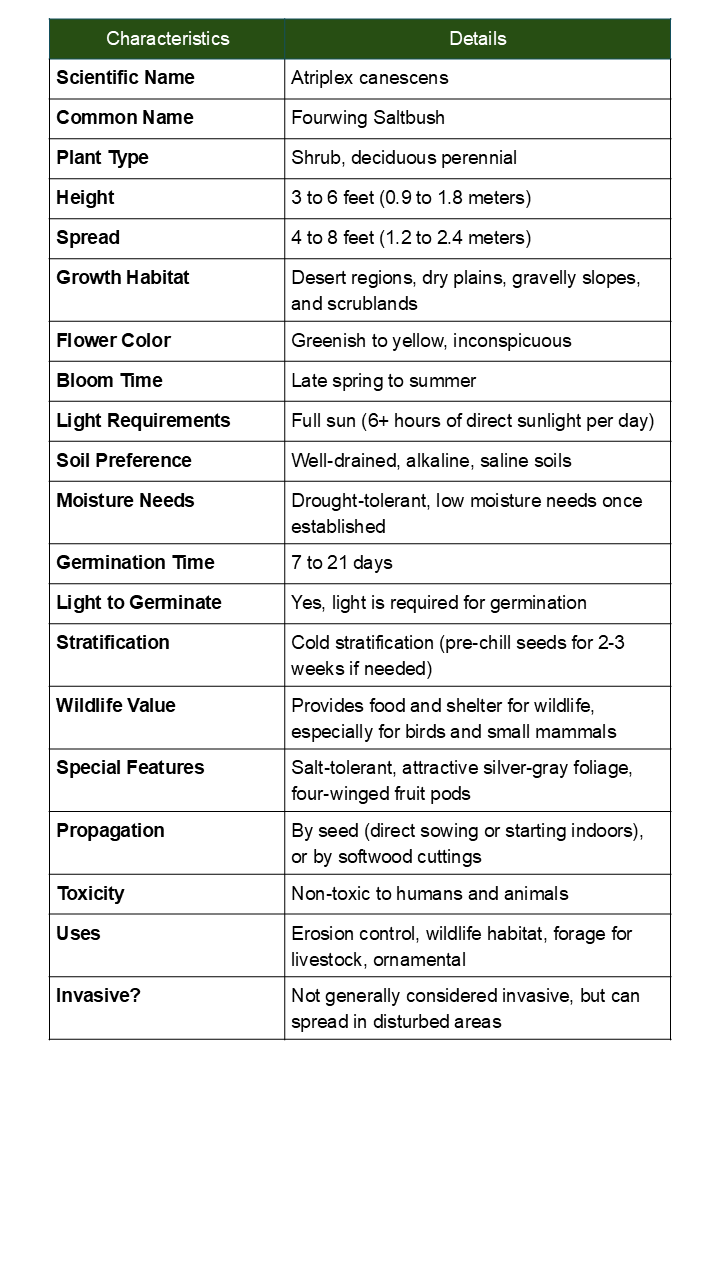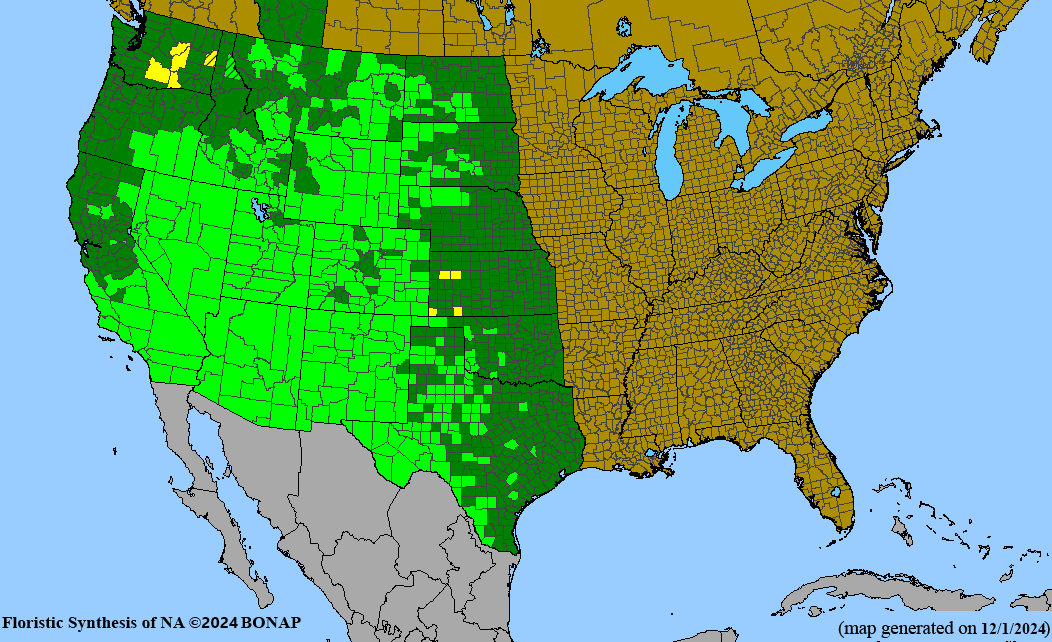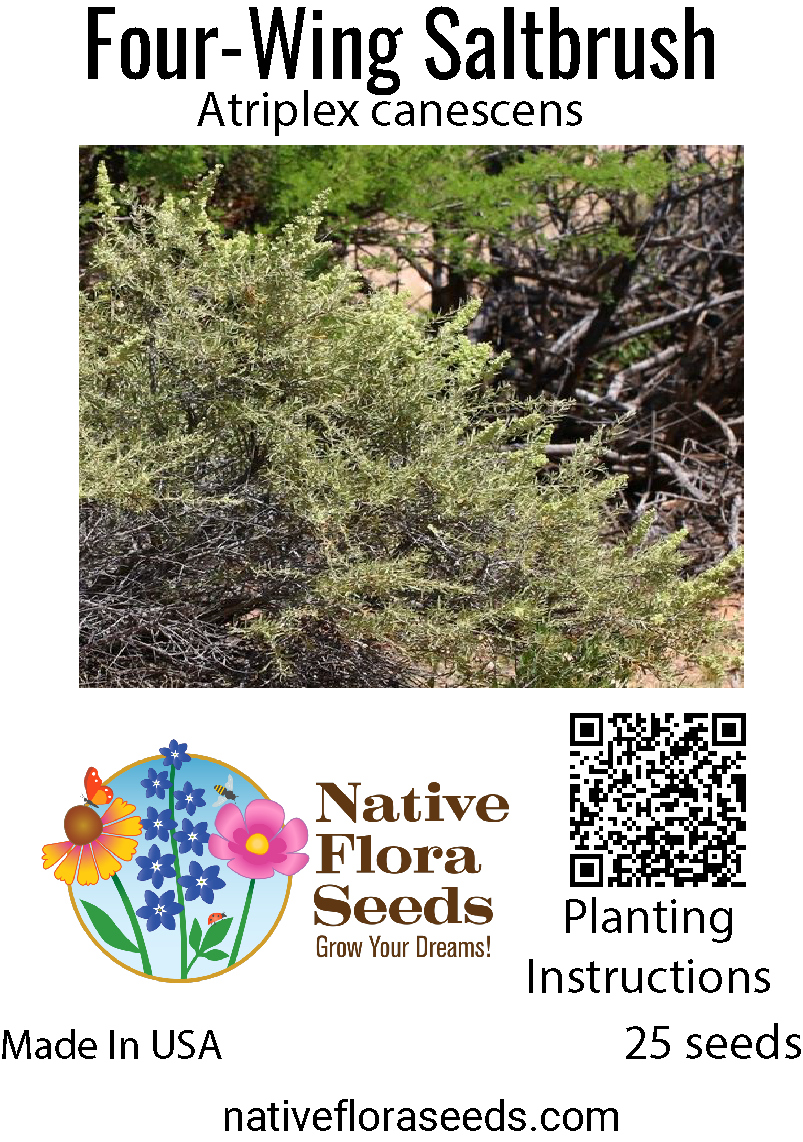Four-Wing Saltbush Seeds - Native Desert Shrub (Atriplex canescens)
Transform Your Landscape with Four-Wing Saltbush
Create a resilient, wildlife-friendly landscape with Four-Wing Saltbush (Atriplex canescens), one of the most valuable native shrubs of the American West. These hardy seeds produce drought-tolerant shrubs with distinctive silvery-gray foliage and unique four-winged seed pods that provide year-round interest and exceptional wildlife value.
Why Four-Wing Saltbush is Essential for Your Landscape
- Extreme Drought Tolerance: Thrives in arid conditions with minimal water once established
- Wildlife Magnet: Seeds feed quail, rabbits, and small mammals; foliage provides browse for deer
- Erosion Control: Deep root system prevents soil erosion on slopes and disturbed areas
- Salt Tolerance: Grows in saline soils where other plants struggle
- Year-Round Interest: Silvery foliage and distinctive winged seeds provide seasonal beauty
- Low Maintenance: Perfect for xeriscaping and water-wise landscaping
Growing Information
Mature Size: 2-6 feet tall and wide
Spacing: 4-6 feet apart
Sun Requirements: Full sun
Water Needs: Very low once established
Soil: Adaptable to poor, alkaline, and saline soils
Hardiness: Zones 4-9
Planting Instructions
Direct sow seeds in fall or early spring. Scarify seeds lightly and plant 1/4 inch deep. Seeds may take several weeks to germinate. Perfect for restoration projects, wildlife habitat, erosion control, and desert landscaping.
Invest in the future of your landscape with this incredibly resilient native shrub that supports wildlife while requiring minimal care.
FREE SHIPPING WITHIN USA



